Comparison of the inactivation of seven foodborne pathogens and spoilage bacteria under 405 nm blue light treatment in liquid media and on solid surfaces
- PMID: 40407369
- PMCID: PMC12211057
- DOI: 10.1128/spectrum.00093-25
Comparison of the inactivation of seven foodborne pathogens and spoilage bacteria under 405 nm blue light treatment in liquid media and on solid surfaces
Abstract
Antimicrobial blue light (aBL; 405 nm) can reduce the viability of multiple bacteria, but there are few reports comparing the susceptibility of foodborne bacteria when exposed to similar conditions. This study was undertaken to evaluate the efficacy of aBL against foodborne pathogens and spoilage bacteria when treated in liquid media and on different surfaces. Cocktails of Listeria, Salmonella, Escherichia, Pseudomonas, Cronobacter, Lactobacillus, and Staphylococcus were incubated in tryptic soy broth (TSB) and phosphate-buffered saline (PBS), as well as on stainless steel (SS) coupons, avocados, and cherry tomatoes as dried cells. Reductions in cell viability were determined after exposure to 405 nm aBL at two temperatures. aBL doses for liquid, SS coupons, and fruits were 1,512, 1,739, and 1,944 J/cm2, respectively. Microbiological counts were determined using standard complex media, and Analysis of variance (ANOVA) was used to determine significant differences (P < 0.05). The viability of Pseudomonas in PBS was reduced by more than 8 Log CFU/mL of aBL exposure, but the reduction of other bacteria was less than 4 Log CFU/mL. In TSB, more than 5 Log CFU/mL were inactivated in all genera. Reductions in viable Cronobacter and Salmonella dried cells on SS coupons were less than 2 Log CFU/coupon. Treatment of cells on avocados resulted in small reductions of Cronobacter and Salmonella (<1.5 Log CFU/skin spot) at 20°C compared to other species. These findings suggest that the susceptibility of different bacterial genera may be quite variable in response to aBL treatment, and these differences should be considered for potential applications.IMPORTANCEReady-to-eat (RTE) foods have been associated with multiple outbreaks caused by foodborne pathogens. While the safety of many RTE foods such as fresh produce relies on traditional cleaning and sanitation systems, they are often insufficient to keep bacteria off food-contact surfaces within the processing and packing environment. Antimicrobial blue light (aBL) in the range of 400-470 nm of wavelength may be a promising disinfectant alternative. However, more comprehensive studies are needed to better assess the effectiveness of aBL against a wide range of foodborne pathogens and spoilage. Such research could provide valuable insights into aBL's potential as a crucial tool for ensuring food safety.
Keywords: Lactobacillus; Pseudomonas; blue light; food safety; foodborne pathogens.
Conflict of interest statement
The authors declare no conflict of interest.
Figures
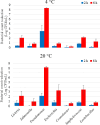
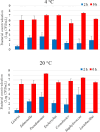
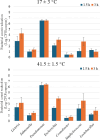
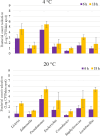
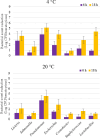
Similar articles
-
A rapid and systematic review of the clinical effectiveness and cost-effectiveness of paclitaxel, docetaxel, gemcitabine and vinorelbine in non-small-cell lung cancer.Health Technol Assess. 2001;5(32):1-195. doi: 10.3310/hta5320. Health Technol Assess. 2001. PMID: 12065068
-
Behavioral interventions to reduce risk for sexual transmission of HIV among men who have sex with men.Cochrane Database Syst Rev. 2008 Jul 16;(3):CD001230. doi: 10.1002/14651858.CD001230.pub2. Cochrane Database Syst Rev. 2008. PMID: 18646068
-
Home treatment for mental health problems: a systematic review.Health Technol Assess. 2001;5(15):1-139. doi: 10.3310/hta5150. Health Technol Assess. 2001. PMID: 11532236
-
Intravenous magnesium sulphate and sotalol for prevention of atrial fibrillation after coronary artery bypass surgery: a systematic review and economic evaluation.Health Technol Assess. 2008 Jun;12(28):iii-iv, ix-95. doi: 10.3310/hta12280. Health Technol Assess. 2008. PMID: 18547499
-
Systemic pharmacological treatments for chronic plaque psoriasis: a network meta-analysis.Cochrane Database Syst Rev. 2021 Apr 19;4(4):CD011535. doi: 10.1002/14651858.CD011535.pub4. Cochrane Database Syst Rev. 2021. Update in: Cochrane Database Syst Rev. 2022 May 23;5:CD011535. doi: 10.1002/14651858.CD011535.pub5. PMID: 33871055 Free PMC article. Updated.
Cited by
-
The combined 410nm and infrared light effectively suppresses bacterial survival under realistic conditions.Front Cell Infect Microbiol. 2025 Aug 1;15:1624160. doi: 10.3389/fcimb.2025.1624160. eCollection 2025. Front Cell Infect Microbiol. 2025. PMID: 40822590 Free PMC article.
References
-
- Bhatia V, Nag R, Burgess CM, Gaffney M, Celayeta JMF, Cummins E. 2024. Microbial risks associated with Ready-To-Eat Fresh Produce (RTEFP) – a focus on temperate climatic conditions. Postharvest Biol Technol 213:112924. doi: 10.1016/j.postharvbio.2024.112924 - DOI
-
- Leaman SM, Kerr J, Salas S, Malik A, Suslow TV, Wiedmann M, Davis DA. 2023. Fresh produce harvesting equipment – a review of cleaning and sanitizing practices and related science. FPT 43:126–143. doi: 10.4315/FPT-22-023 - DOI
-
- Lukšiene Ž. 2005. New approach to inactivation of harmful and pathogenic microorganisms by photosensitization, p 411–418. In Food technology and biotechnology. Vol. 43.
Publication types
MeSH terms
Substances
Grants and funding
LinkOut - more resources
Full Text Sources
Miscellaneous

